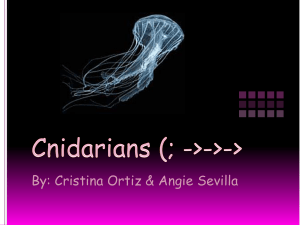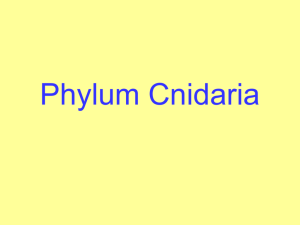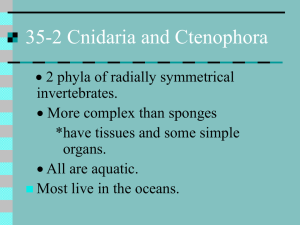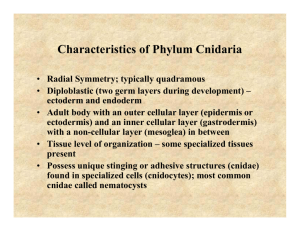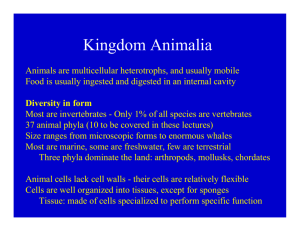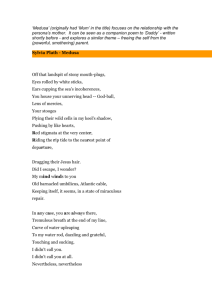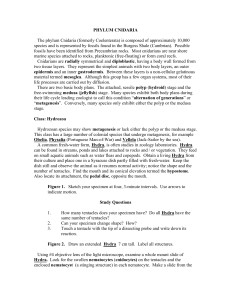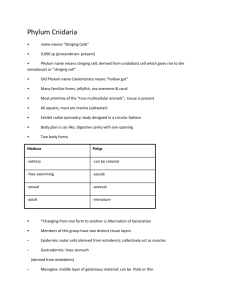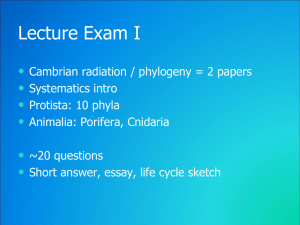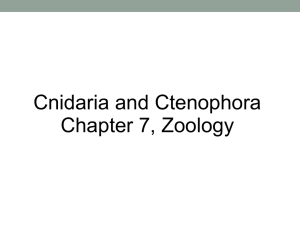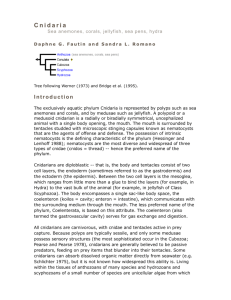Lecture 2
advertisement
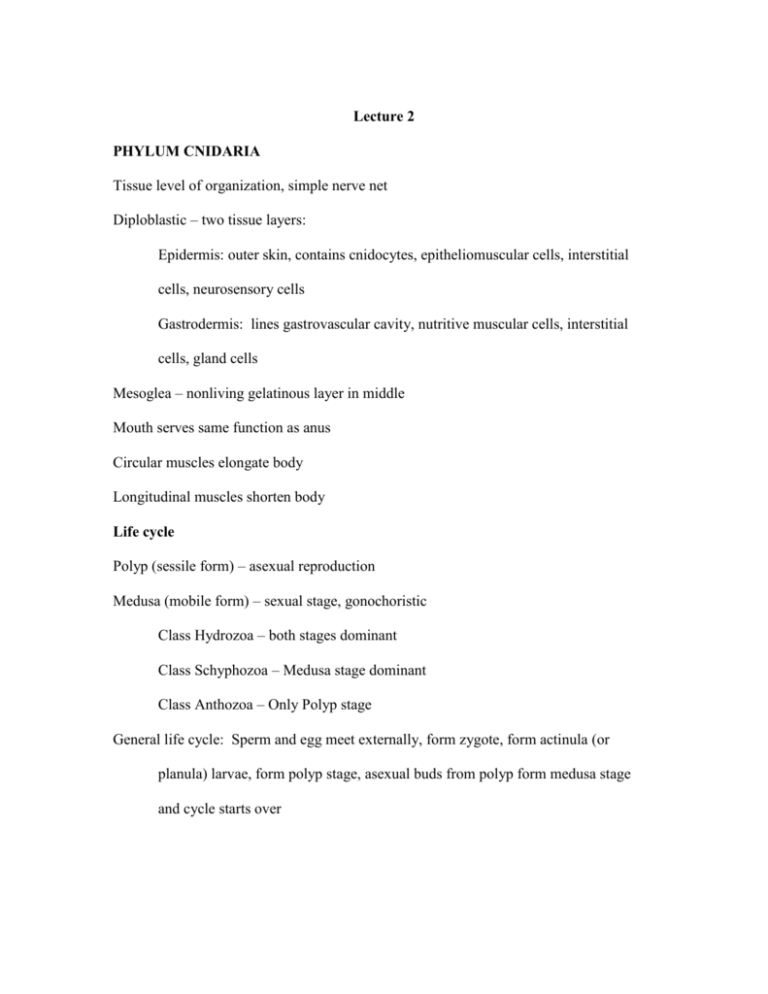
Lecture 2 PHYLUM CNIDARIA Tissue level of organization, simple nerve net Diploblastic – two tissue layers: Epidermis: outer skin, contains cnidocytes, epitheliomuscular cells, interstitial cells, neurosensory cells Gastrodermis: lines gastrovascular cavity, nutritive muscular cells, interstitial cells, gland cells Mesoglea – nonliving gelatinous layer in middle Mouth serves same function as anus Circular muscles elongate body Longitudinal muscles shorten body Life cycle Polyp (sessile form) – asexual reproduction Medusa (mobile form) – sexual stage, gonochoristic Class Hydrozoa – both stages dominant Class Schyphozoa – Medusa stage dominant Class Anthozoa – Only Polyp stage General life cycle: Sperm and egg meet externally, form zygote, form actinula (or planula) larvae, form polyp stage, asexual buds from polyp form medusa stage and cycle starts over PHYLUM CNIDARIA CLASS HYDROZOA – all medusa have characteristic velum ORDER HYDROIDEA Hydra – single polyp, no medusa stage Obelia – colonial organism, feeding polyps called gastrozooids Reproductive polyps called gonozooids Both are connected thru gastrovascular cavity Medusa forms: Leptomedusa – flattened bell (Obelia) Anthomedusa – domed bell (Gonionemus) ORDER SIPHONOPHORA Portugese Man-O-War (colonial organism) Pneumatophore = “sail” Hanging morphs called cormidia with gastrozooids Fishing tentacles Dactylozooids with cnidocytes Budding medusae form sexual gonophores, stay in colony ORDER HYDROCORALLINAE Hydrozoan corals (colonial organisms) Calcium carbonate exoskeleton (fire corals – covered in cnidocytes) Tiny pits in exoskeleton where polyps reside CLASS SCHYPHOZOA ORDER SEMOSTOMAE Typical jellyfish Life Cycle: Sperm and egg unite to form zygote, planula larvae, polyp form called scyphostoma, forms strobula, forms ephyra (baby medusa), forms adult medusa CLASS ANTHOZOA (NO MEDUSA STAGE IN THIS CLASS) SUBCLASS ZOANTHERIA ORDER ACTINARIA Sea Anemones, solitary polyps with no exoskeleton ORDER SCLERACTINIA True corals, also called hard coral Calcium carbonate exoskeleton, very few cnidocytes OMMISSIONS AND SUGGESTIONS EX. 2 – omit epitheliomuscular cells, gland cells EX. 4 – living hydra, start this exercise first because they can take some time to capture their prey EX. 6 & 7 – omit tentaculocysts on live specimens EX. 8 – omit everything but pneumatophores and fishing tentacles EX. 9 – omit everything starting after “in one corner of the drawing……” Only label radial canal EX. 10 – omit subgenital pits and rhopalia EX. 11 – omit mesenteries, epidermis, gastrodermis, ostia, stomodaeum, and siphonoglyph EX. 12 – be sure you label the types of corals you draw on this page
